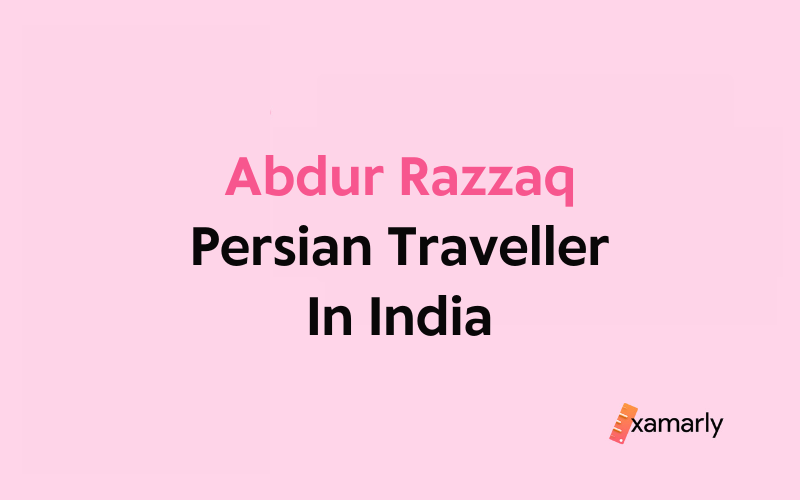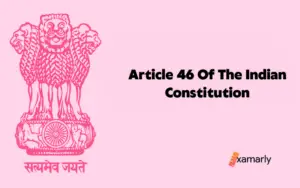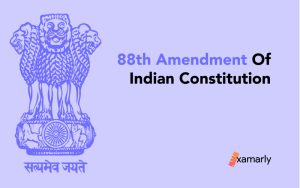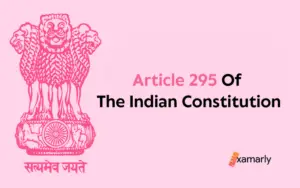- IAS Preparation
- UPSC Preparation Strategy
- Abdur Razzaq 1413 1482

Abdur Razzak [1413 - 1482]
Abdur Razzak was an Islamic scholar and a historian who visited the Vijayanagara Kingdom in India at the time of Dev Raya II, the greatest ruler of the Sangama dynasty.
This article aims to share the facts related to Abdur Razzak’s personal life and his visit to India for candidates preparing for the IAS Exam .
Information on Abdur Razzak’s visit to India is relevant for Civil Services aspirants under the Indian History part of UPSC Prelims exam.
This article has information related to the History section of the UPSC Syllabus.
Given below are the links that give information on the account of various foreign travellers who visited India –
For information about other Foreign Envoys who visited India , visit the linked page.
Abdur Razzak – Personal Background
- Abdur Razzak was born on 7 November 1413 in Herat (presently in Afghanistan) to Jalal-ud-Din Ishaq.
- Jalal-ud-Din Ishaq, father of Abdur Razzak was the qazi and imam of the Shah Rukh’s court in Herat. Shah Rukh was the ruler of Persia, Timurid dynasty (Timur was succeeded by his son Shahrukh).
- After the death of his father in 1437, Abdur was appointed the qazi of the Shah Rukh’s court. Under whom Razzak prospered as a legal courtier, trustee, and ambassador.
- From that time on he was a witness of political and military events at the capitals of Herat and Samarqand, as well as on diplomatic and military missions.
- Razzak’s ambassadorial missions took him to various places in Eurasia. His most important task was an official mission to India.
Abdur Razzak Visit to India – UPSC Prelims Facts
- Abdur Razzak, the Persian Islamic scholar and a Timurid chronicler visited the Vijaynagar Kingdom at the time of Dev Raya II ruler of Sangama dynasty . Some important facts about him are listed below:
- In 1441, Shah Rukh of Persia sent Kamal-ud-din Abdur Razzaq as an emissary on a three-year mission, mostly to the court of the Zamorin of Calicut ( King Samudri of Kozhikode in Kerala).
- The major Muslim power in the Deccan at that time was the Bahmani Empire, founded by a family of Iranian origin. Read in detail about the Bahmani Kingdom 1347-1526 on the given link.
- Razzak was a reluctant traveler. In January 1442 he left Herat because of the Monarch . He faced the perils of the sea, landed in Muscat for safety, reached Kariat and was seriously ill due to the heat but finally managed to recover enough to undergo 18 days of voyage at sea to finally land in Calicut in the southwest of India.
- He was not much impressed by the natives of Calicut and described them as scantily clad and who practised polyandry.
- His stay in Calicut was limited, as the Vijayanagar King invited him to his kingdom. Razzak passing through Mangalore, Belur reached Vijayanagara.
To read more about the Deccan Kingdoms – Chalukyas, Hoysalas, Kakatiyas , check the linked article.
- Abdur Razzak wrote his travels in the Matla-us-Sadain wa Majma-ul-Bahrain, or The Rise of Two Auspicious Constellations and the Confluence of Two Oceans .
- According to Razzak’s account, Deva Raya II’s empire extended from Ceylon (now Sri Lanka) to Gulbarga, and Orissa to Malabar.
- On meeting the King he described that King Deva Raya was sitting in a forty pillared hall surrounded by Brahmans, had an olive complexion and wore a collar of king pearls. He was tall, young with no beard or mustache.
- When Abdur Razzak met the King, he was given a Chinese fan, money, camphor and betel. Razzak’s accommodation was at the high ground near the King’s palace, and he was daily sent two sheep, four couples of fowls, rice, butter, and two gold varahas.
- He described that the city of Vijayanagara was governed by an able King. It was filled with temples, gardens and palaces. There were 300 harbors and 1,100000 warriors. It was well fortified and the markets were teeming with wealth. He also mentioned the Royal Center of Hampi that several rivulets and streams flowed through channels of cut stone.
- Abdur Razzak the Iranian ambassador to the Deccan (southern India) ended his year-long stay in Hampi at the court of the Raja of Vijaynagar and set out from there in November 1444 . He left the city, reached Mangalore after 18 days, then went on to Kalahat, Muscat, Khorfakkan and finally to the port of Hurmuz. He was at the sea for a total of seventy-five days. And after this never ventured out to travel again. He swore in his travelogue that he would never make a voyage again because his brother died on the passage to India, and he himself was caught up in court intrigues that nearly killed him.

Frequently Asked Questions Related to Abdur Razzaq
What did abdur razzaq say about vijayanagar, why was abdur razzaq a reluctant traveller.
Other related links:
Leave a Comment Cancel reply
Your Mobile number and Email id will not be published. Required fields are marked *
Request OTP on Voice Call
Post My Comment
IAS 2024 - Your dream can come true!
Download the ultimate guide to upsc cse preparation, register with byju's & download free pdfs, register with byju's & watch live videos.
- general knowledge
List of foreign travellers who visited the Vijayanagara Empire
From Ancient to Modern Indian History, Indian subcontinent encounter by foreign travellers and some of them left valuable accounts of their travels. These foreign accounts gave us a valuable objective document that will help us to understand the social-political-economic condition of a particular era. These travellers account cannot be understood without knowing their perception of writing. Here, we are giving the list of famous travellers who visited India during reign of different rulers of Vijayanagar Empire.

Foreign Travellers visited Vijayanagar Kingdom
1. Abu Abdullah/lbn Batuta
He was from Morocco, who travel thirty years of his life from North Africa, West Africa, Southern Europe and Eastern Europe in the West, to the Middle East, Indian subcontinent, Central Asia, Southeast Asia and East China. He left an account of Harihara I’s reign in his book Rehla ( Tuhfat-un- Nuzzar fi Gharaib UL-Amsar WA Ajaib-UL-Assar).
2. Nicolo de Conti
Source: m2.paperblog.com
He was Italian merchant, scholar, and a traveller who visited the Vijaynagar Kingdom during the time of Dev Raya II. He left an account in the Travels of Nicolo Conti.
3. Abdur Razzaq
Source: upload.wikimedia.org
He was a Persian, Timurid chronicler and a scholar who visited the Vijaynagar Kingdom at the time of Dev Raya II as an ambassador of Shah Rukh, the Timurid dynasty ruler of Persia. He gives an account of the reign of Devaraya II in his Matla as Sadain Wa Majma ul Bahrain .
4. Athanasius Nikitin
Source: russiapedia.rt.com
He was a first Russian traveller and merchant who visited India. He described the conditions of the Bahamani kingdom under Muhammad III in his Voyage to India.
5. Ludvico de Vorthema
Source: www.loc.gov
He was Italian merchant and traveller who visited India and left his memoirs in Travels in Egypt, India, Syria, etc. He was the first Christian to make the holy pilgrimage to Mecca.
6. Duarte Barbosa
Source: s-media-cache-ak0.pinimg.com
He was Portuguese Writer, scrivener and explorer who had given a vivid account of Vijaynagara governance under Krishna Deva Raya in his book i.e. An Account of Countries Bordering the Indian Ocean and their Inhabitants.
7. Dominigo Paes
He was Portuguese merchant, writer and explorer who visited India and gave most detailed accounts of all historic descriptions of ancient city Hampi which was governed by Vijaynagar Empire under Krishna Deva Raya .
8. Fernao Nuniz
Source: ak.jogurucdn.com
He was Portuguese traveller, chronicler and horse trader who visited India during reign of Achyutaraya and who spent three years in Vijayanagara. He gave detailed account on the history of Vijaynagar especially the foundation of the city, the subsequent careers of three dynasties of rulers, and the battles that they fought with the Deccan sultans and Orissan Rayas. He also mentions cultural aspects of the empire and admire the jewels worn of women as well as how women were appointed in the King's service.
9. Marco Polo
Source: www.biography.com
List of Foreign Travellers visited Vijayanagar Kingdom
In the above detail list of foreign travellers who visited Vijaynagar Kingdom and some of them left their account on that basis the socio-cultural and political conditions can also be understandable.
Get here current GK and GK quiz questions in English and Hindi for India , World, Sports and Competitive exam preparation. Download the Jagran Josh Current Affairs App .
- September Important Days 2024
- Teacher's Day Wishes
- Happy Teachers Day
- Teacher's Day Quiz Question
- Paralympics 2024 Medal Tally India
- Dr. Sarvepalli Radhakrishnan Quotes
- How to Use Meta AI
- India PM List 2024
- Nirmala Sitharaman
- Finance Ministers List 2024
- Medieval History
- GK for State PSC
- GK for UPSC
- History of India
Latest Education News
SSC CGL Admit Card 2024 Out at ssc.gov.in: Direct Link to Download Region Wise Tier 1 Hall Ticket PDF Here
SSC SR CGL Admit Card 2024 OUT at sscsr.gov.in: Download Hall Ticket Link Here
Teacher’s Day 2024 Shayari: शिक्षक दिवस पर इन शायरी से शिक्षकों को दें शुभकामनाएं
Teacher’s Day 2024: 50+ Images, Photos, Pictures to Share with your Favorite School and Coaching Teacher
RUHS B.Sc Nursing 2024 Result Declared, Download Marksheet at bscnursing2024.com
Happy Teacher’s Day 2024 Wishes, Quotes in Hindi: शिक्षक दिवस पर इन संदेशों के साथ भेजें शुभकामनाएं
Happy Teachers Day 2024: 70+ Quotes, Wishes, Greeting Messages to Share with your Teacher and Mentor
10 Amazing Ideas to Celebrate Teachers’ Day 2024
अयोध्या राम मंदिर पर हिंदी में निबंध, Essay on Ram Mandir in Hindi
DRDO ITR Recruitment 2024: Apply for 54 Graduate and Technician Diploma Apprentice Posts, Check Eligibility
MPBSE Class 9 Marathi Syllabus 2024-25: Download MP Board Marking Scheme PDF
RRB NTPC Recruitment 2024 Notification at rrbapply.gov.in for 11558 Vacancies: Check Salary, Eligibility & Exam Details
RRB NTPC Full Form: Railway Recruitment Board Non Technical Popular Categories
Find 3 differences between the man in park pictures in 10 seconds!
UPSC Recruitment 2024: Apply Online for 82 Various Posts Vacancies
Today Current Affairs One Liners And Top News: 04 September 2024- Teachers' Day Naval exercise Varuna Paris Paralympics 2024
Teacher's Day 2024 Quiz: GK Questions & Answer On Shikshak Divas in India
National Teachers Day 2024: Meet India's Best Teachers of Year 2024
Teachers Day Speech in English: Short and Long Speech for Students, 10 Lines
India Post GDS 2nd Merit List 2024 at indiapostgdsonline.gov.in: Check Latest Updates


Abdur Razzaq Persian Traveller in India

Abdur Razzaq Samarqandi was a Persian traveler, a diplomat of the Shah Rukh in Persia , and is among the famous foreign travellers to visit India. If you’re looking for fascinating biographies of famous 15th-century travellers, this will be a perfect start.
He witnessed political and military events in Samarqand (in present-day Uzbekistan) and Herat (in present-day Afghanistan).
He wrote a 45-page travelogue about his experiences, which includes first-hand accounts of the lives of common people in Calicut and the events that took place in the Ancient City of Vijayanagar at Hampi. He provided one of the most significant descriptions of the Vijayanagar Empire in the 15th century.
From the record of Chinese travellers, Portuguese travellers & renowned explorers like Marco Polo , we come to know about ancient India in a much better way. We shall talk more about Abdur Razzaq in this section since it will help us comprehend how foreigners in ancient times saw India.
Abdur Razzaq Persian Traveller in India – Early Life & Background
Abdur razzaq: travel and writings, abdur razzaq: visiting india, accounts of abdur razzaq in india, list of foreign travellers who visited the vijayanagara kingdom, faqs on abdur razzaq persian traveller in india, who was abdur razzaq, when did abdur razzaq visit india, what did abdur razzaq write about his travels in india, what did abdur razzaq observe about india.
- How did Abdur Razzaq's travelogue influence historical research on India?
What other places did Abdur Razzaq visit besides India?
Why did abdur razzaq chose not to travel again.
- He was the son of Jalal-ud-Din Ishaq.
- He was born on November 7, 1413 in Herat.
- Abdur Razzak’s father served as the Qazi and Imam of the Shah Rukh’s court in Herat. Shah Rukh, the ruler of Persia, was a Timurid dynasty member (Timur was succeeded by his son Shah rukh).
- Following his father’s death in 1437, Abdur was appointed as the Qazi of Shah Rukh’s court.
- Razzak flourished as a legal courtier, trustee, and ambassador under his tutelage.
- From that moment on, he witnessed military and political operations, as well as diplomatic and military missions, in the capital cities of Herat and Samarqand.
- His diplomatic duties took Razzaq to many different places all across & around Eurasia. He visit to India was his most significant obligation.
You might also like to read about: Delhi Sultanate Dynasty .
Abdur Razzaq embarked on several diplomatic missions throughout his lifetime, including visits to India and the court of Timur in Central Asia.
His most well-known journey was his pilgrimage to Mecca, during which he traveled through Iran, Iraq, and the Arabian Peninsula, recording his observations in a travelogue called “Matla’ al-sa’rayn.” This work provides valuable insights into the social, cultural, and religious practices of the region during the late 15th century.
Abdur Razzaq is primarily known for his travelogue “Matla’ al-sa’rayn”. The work is highly regarded for its detailed and vivid descriptions of people, places, and customs, and it provides valuable insights into the cultural and historical context of the period.
Abdur Razzaq also wrote other works, including a biography of Timur and a book on the history of Central Asia, but these have not survived to the present day.
If you’re preparing for the UPSC Exams, our blog on How To Study History For UPSC will help you out.
Abdur Razzaq represented Shah Rukh, the Timurid dynasty monarch of Persia, in Kozhikode, India, from January 1442 to January 1445. He chronicled his travels to India in a travelogue with a 45-page narrative.
It is included as a section in his memoir “Matla-us-Sadain wa Majma-ul-Bahrain”, also known as The Rising of Two Auspicious Constellations and the Meeting of Two Oceans, a work of approximately 450 pages that provides a thorough account of the history of his region & of the world from 1304 to 1470 and draws heavily on other writings.
- In his account of his trip to India, he describes the wealth and tremendous magnificence of the Ancient City of Vijayanagara at Hampi as well as life and happenings in Calicut under the Zamorin .
- Vijayanagar was referenced to as a city “the pupil of the eye has never seen, and the ear of wisdom has never heard” by him.
- The Bahmani Empire , which was established by a family of Iranian ancestry, was the dominant Muslim authority in the Deccan at the time.
- Abdur Razzaq was sent on a three-year voyage by Shah Rukh of Persia in 1441, with most of that time being spent at the court of the Zamorin of Calicut (King Samudri of Kozhikode in Kerala).
- He was unwilling to embark on a voyage and only did so at the monarch’s request. In January 1442, he left from Herat.
- After overcoming the dangers at sea, he landed in Muscat for safety, then traveled to Kariat in Kerala, and fell gravely ill from the heat, however eventually he recovered enough to continue on an 18-day voyage by sea to Calicut in southwest India.
- The residents of Calicut, whom Abdur Razzaq characterized as wearing minimal clothing and engaging in polyandry, did not impress him. Due to the Vijayanagar King’s invitation to visit his realm, his stay in Calicut was only momentary.
- He landed in the Vijaynagar Empire through Mangalore.
- He spent his entire year in the court of the King of Vijayanagara in Hampi. He departed from the city and took an 18-day journey to reach Mangalore, followed by stops in Kalahat, Muscat, Khorfakkan, and the port of Hurmuz.
- According to Razzak, Deva Raya II ‘s domain extended from Orissa to Malabar and from Ceylon (present-day Sri Lanka) to Gulbarga.
- He spent a total of 75 days at sea and never set out on another journey after that.
Also read about the different Indian States in our blogs on:
- States and Union Territories of India .
- States and Capitals of India .
Though he was an apprehensive traveler, his accounts are vivid and full of information, describing the Vijayanagara Kingdom in great detail. Some of his narrations are given below:
- He characterized King Deva Raya as having an olive complexion, an ornate collar of pearls, and being seated in a room with forty pillars while being surrounded by Brahmans when they first met. He was youthful, tall, and had no mustache or beard.
- Abdur Razzak received a Chinese fan, cash, camphor, and betel when he encountered the King. Razzak lived on high ground close to the king’s palace and received two sheep, four pairs of chickens, rice, butter, and two gold varahas per day.
- He stated that a capable King oversaw the kingdom of Vijayanagara. It was dotted with gardens, temples, and palaces.
- There were 1,100,000 warriors and 300 docks. The kingdom had strong defences, and money was abounding in the markets.
- He also referred to the Royal Center of Hampi, where numerous streams and rivulets ran along channels made of cut-stone.
- He gave a detailed account of the city’s beauty, prosperity, and vast agriculture.
If reading this inspires & interests you to take History as an optional for UPSC, our following blogs will be super-helpful:
- History Optional for UPSC .
- History Optional Syllabus for UPSC .
The Vijayanagara Empire in South India was a prominent center of trade, culture, and power during the 14th-16th centuries, attracting visitors from different parts of the world. Some of the foreign travelers who visited the Vijayanagara Kingdom are:
- Ibn Battuta: A Moroccan traveler who visited Vijayanagara in 1342 and wrote about the city’s opulence and grandeur.
- Niccolò de’ Conti: An Italian merchant who visited Vijayanagara in the 15th century and wrote about its wealth and commercial activity.
- Abdur Razzak: A Persian ambassador who visited the Vijayanagara court in the 15th century and wrote about its political and cultural landscape.
- Domingo Paes: A Portuguese traveler who visited Vijayanagara in the early 16th century and wrote about its military might and urban development.
- Fernão Nunes: A Portuguese traveler who visited the region in the early 16th century and wrote about the Vijayanagara Empire’s political and economic systems.
- Nuniz: A Portuguese traveler who visited the empire in the early 16th century and wrote about its customs and traditions.
- Varthema: An Italian traveler who visited the empire in the early 16th century and wrote about its people and culture.
These accounts provide valuable insights into the history, culture, and society of the Vijayanagara Empire.
Abdur Razzaq was a traveler who spent a lot of time in India during the Medieval Era. His chronicles provide us with enough information on the Vijayanagara Kingdom. He wasn’t a particularly ardent traveller, though. However, in his accounts, he is enthused to talk about the city of Vijayanagara.
Abdur Razzaq was a 15th-century Persian diplomat and traveler who visited India during the reign of Sultan Muhammad bin Tughlaq and wrote a travelogue about his experiences.
Abdur Razzaq visited India in the 1440s during the reign of Sultan Muhammad bin Tughlaq of the Tughlaq dynasty.
Abdur Razzaq wrote a detailed travelogue about his experiences in India, called “Matla’ al-sa’rayn,” which provides valuable insights into the social, cultural, and political practices of the region during the 15th century.
In his travelogue, Abdur Razzaq described the geography, climate, agriculture, flora and fauna of India. He also wrote about the architecture, customs, and religious practices of the region, as well as the political and military developments during his visit.
How did Abdur Razzaq’s travelogue influence historical research on India?
Abdur Razzaq’s travelogue provides a first-hand account of the region during the 15th century and has been used by scholars to understand the cultural, social, and political history of India during that period.
Abdur Razzaq also visited the court of Timur in Central Asia and made a pilgrimage to Mecca, during which he traveled through Iran, Iraq, and the Arabian Peninsula.
Abdul-Razzaq became a reluctant traveller and did not want to travel again and he had good reasons for doing so. His brother was killed during the voyage and he was captured in court intrigues. The journey was dangerous and fast-paced. Abdur Razzak pledged to stay home.
Related Posts

Article 46 Of The Indian Constitution

88th Amendment Of Indian Constitution

Article 295 Of The Indian Constitution

Differences Between Folk Dance And Classical Dance

Calicut through the Eyes of Abdur Razzak
" In the year 845 (AD 1442), the author of this narrative, Abdur Razzak, the son of Ishaq, in obedience to the orders of the sovereign of the world [Mirza Shah Rukh of Persia] set out on his journey towards the province of Hormuz and the shores of the [Indian] ocean... ".
Abdur Razzak served as the ambassador of Mirza Shah Rukh, of the Timurid Dynasty of Iran (known earlier as Persia), to the Samoothiri (Zamorin) of Calicut. Abdur Razzak documented his experiences in his work titled Matla-us-Sadain wa Majma-ul-Bahrain.
Narrative of the Journey of Abdur Razzak to Calicut :
On January 13th, 1442, Abdur Razzak began his exciting journey from Herat, Afghanistan. His travels took him through Qohistan, to the coast of the Sea of Oman, and the port of Hormuz. He stayed in Hormuz for two months before taking a journey to Muscat and then onward to Qurayyat. Continuing his journey, Razzak and his companions proceeded to Qalhat and later on to Sur. Finally, he made it to India, after a 18-day voyage, landing in Kalikot (Calicut) in South India in November 1442.
Calicut is an incredibly safe harbour, just like Hormuz on the Persian Gulf, that brings together merchants from all over the world. Here one can find abundance of valuable items from maritime countries like Abyssinia [Ethiopia, Northeast Africa], Zirbad [Indonesia, Southeast Asia] and Zanzibar [East Africa]. From time to time ships come from Mecca and other towns of Hejaz and stop for a while in this port.
Calicut is a city mainly inhabited by Hindus, yet there is a sizable population of Muslims who have constructed two mosques, where Friday prayers are held. Under the fair and secure administration of the city, wealthy merchants bring large cargoes of merchandise from maritime countries, and store them in the lanes and bazaar for extended periods without worrying about security. The custom house officers guarantee its safety; a custom duty of one-fortieth is applied upon sale.
According to Abdur Razzak, some ambassadors of Mirza Shah Rukh, had to stop by Calicut during their return from Bengal. These ambassadors had conveyed to Samoothiri, the ruler of Calicut, an account of the wealth, prosperity, and strength of Shah Rukh's realm. The Samoothiri had also heard from reliable sources that rulers from all corners of the world - land, sea, east and west - had sent emissaries and messages to Shah Rukh's court, which they considered the solution to their every need and refuge of their hopes. Most recently, Mirza was asked to settle the ongoing dispute between the Sultanates of Bengal and Jaunpur.
Razzak further notes that upon learning all this, the Samoothiri assembled numerous gifts and tribute and sent a messenger to inform Mirza that the Islamic kutbah was recited in his port during the Friday prayer and the holiday prayer, requesting that if the Persian monarch permitted it, they would recite the kutbah in his royal name.
Upon arriving in Herat, the emissaries from Bengal presented the Samoothiri's petition to the monarch. The chief envoy sent to Herat was a Muslim, who proposed that if Shah Rukh will send an ambassador to Calicut the Samoothiri might be open to embracing Islam. This proposition was accepted by Shah Rukh, who subsequently sent Abdur Razzak Samarqandi as ambassador to India, with generous gifts of horses, gold-clad robes, caps and other valuable items.
When he landed Calicut, Abdur Razzak noticed a tribe of people he had never seen before. The people were of a dark skin tone and clad in minimal clothing, wearing only a langot - a piece of cloth extending from the navel down to just above the knees - with a dagger and leather shield in each hand. Both king and beggar look alike, but the Muslims wear rich luxurious costumes like the Arabs.
At Calicut, a quarters was allocated to Razzak, and after three days he was granted an audience with the Samoothiri, amidst a grand assembly of 2000-3000 Hindus and distinguished Muslim leaders. "When the Samoothiri dies, his sister's son takes his place [Marumakkathayam or Matrilineal System]. No one becomes king by force. The Hindus are of many sorts: Brahmins, Yogis and others. Although they all share the same polytheism and idolatry, every group has a different system. There is one group whose women have multiple husbands, each of whom has a specific tasks to perform. They divide the day and night, and each one goes to her quarters at a specified time. So long as one is there no other can go in. The Samoothiri is of this group."
Audience with the Samoothiri :
During Abdur Razzak's audience with the Samoothiri, the letter from Shah Rukh was read out and the gifts were presented. However, the Samoothiri showed minimal respect towards the embassy. Consequently, Abdur Razzak left the court and returned to his quarters.
The experience left Abdur Razzak feeling distressed, and he remained at Calicut from November 1442 to April 1443. He expressed his affliction at being forced to remain in such an infelicitous place. It was during this period that Abdur Razzak received an invitation to visit Vijayanagar by Deva Raya II .
Abdur Razzak's Final Words on Calicut : Vessels from Calicut regularly sail to Mecca, mostly laden with pepper. The people of Calicut are adventurous sailors and are known as 'Sons of China'. The pirates of the sea do not molest the ships of Calicut. Everything is procurable in that port. Nobody can kill cow which is held so sacred that they rub the ashes of its dung upon their forehead.
Further Reading :
Deva Raya's Kingdom As Seen By Abdur Razzak
Note : The views expressed here are solely of Abdur Razzak.

IMAGES
VIDEO
COMMENTS
A Persian Timurid chronicler and scholar who was the ambassador of Shah Rukh to India in 1442-1445. He wrote a narrative of his travel and a chronicle of Central Asian history, including the Ming China mission.
Abdur Razzak, born in 1413, was an eminent Islamic scholar and a renowned historian. He is most known for his visit to the Vijayanagara Kingdom in India during the reign of Dev Raya II, the most influential ruler of the Sangama dynasty.
Learn about Abdur Razzaq traveller, who wrote a 45-page travelogue of his visit to India in 1442-1445. Find out his book, history, country, journey, and facts.
Learn about Abdur Razzak, a 15th century Islamic scholar and historian who travelled to India on a diplomatic mission. Find out his personal background, his account of the Vijayanagara Kingdom, and his travelogue.
Abdur Razzaq. Source: upload.wikimedia.org. He was a Persian, Timurid chronicler and a scholar who visited the Vijaynagar Kingdom at the time of Dev Raya II as an ambassador of Shah Rukh, the...
Abdur Razzak was the ambassador of the Timurid ruler Mirza Shah Rukh (r: 1405-1447) of Iran (Persia) to the Samoothiri (Zamorin) of Calicut. Abdur Razzak chronicled his Indian mission in his book titled 'Matla-us-Sadain wa Majma-ul-Bahrain'.
Learn about Abdur Razzaq Samarqandi, a 15th-century Persian diplomat who visited India and wrote a travelogue about his experiences. Find out his observations on the Vijayanagar Empire, the Zamorin of Calicut, and other places he visited.
Abd al-Razzaq Samarqandi From a page move : This is a redirect from a page that has been moved (renamed). This page was kept as a redirect to avoid breaking links, both internal and external, that may have been made to the old page name.
On January 13th, 1442, Abdur Razzak began his exciting journey from Herat, Afghanistan. His travels took him through Qohistan, to the coast of the Sea of Oman, and the port of Hormuz. He stayed in Hormuz for two months before taking a journey to Muscat and then onward to Qurayyat.
Abdur Razzak, like Nicolo di Conti, visited the city during the reign of Deva Raya II., but about twenty years later than Conti. He was entrusted with an embassy from Persia, and set out on his mission on January 13, A.D. 1442.